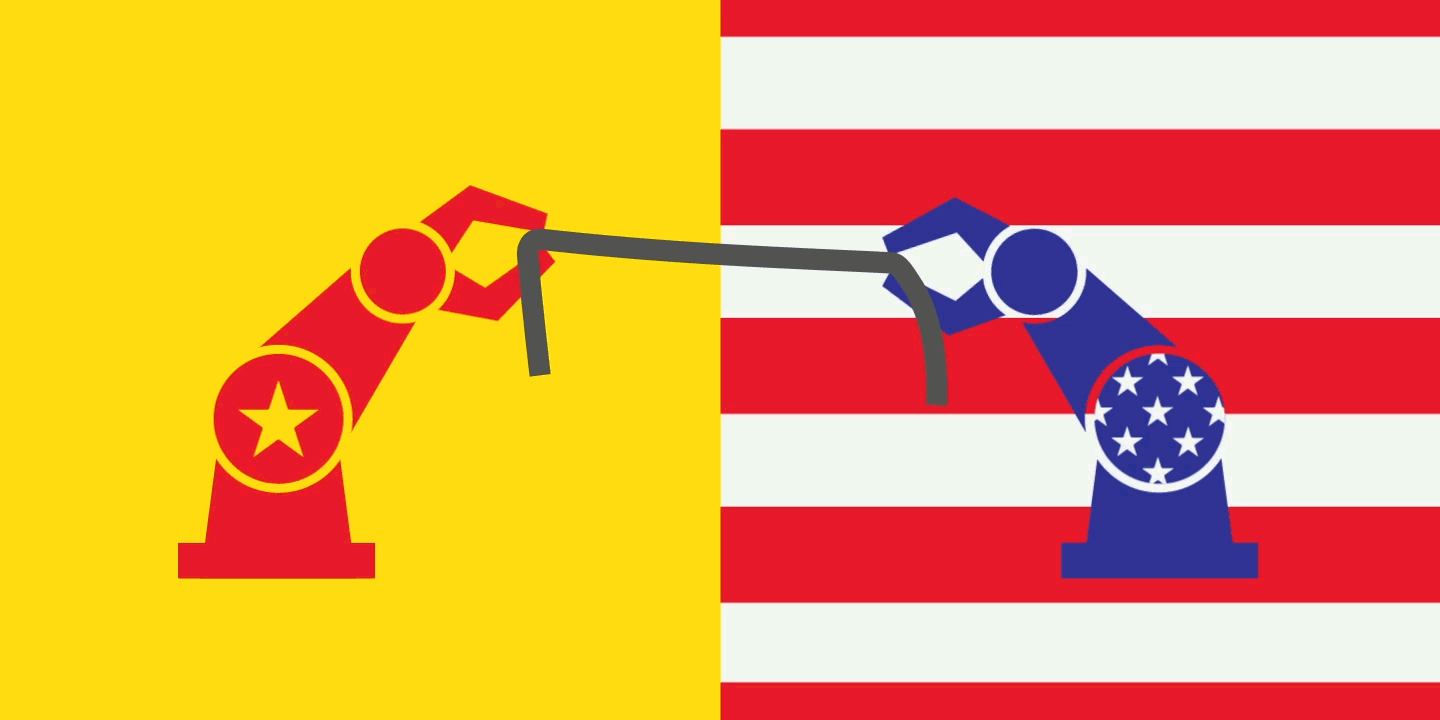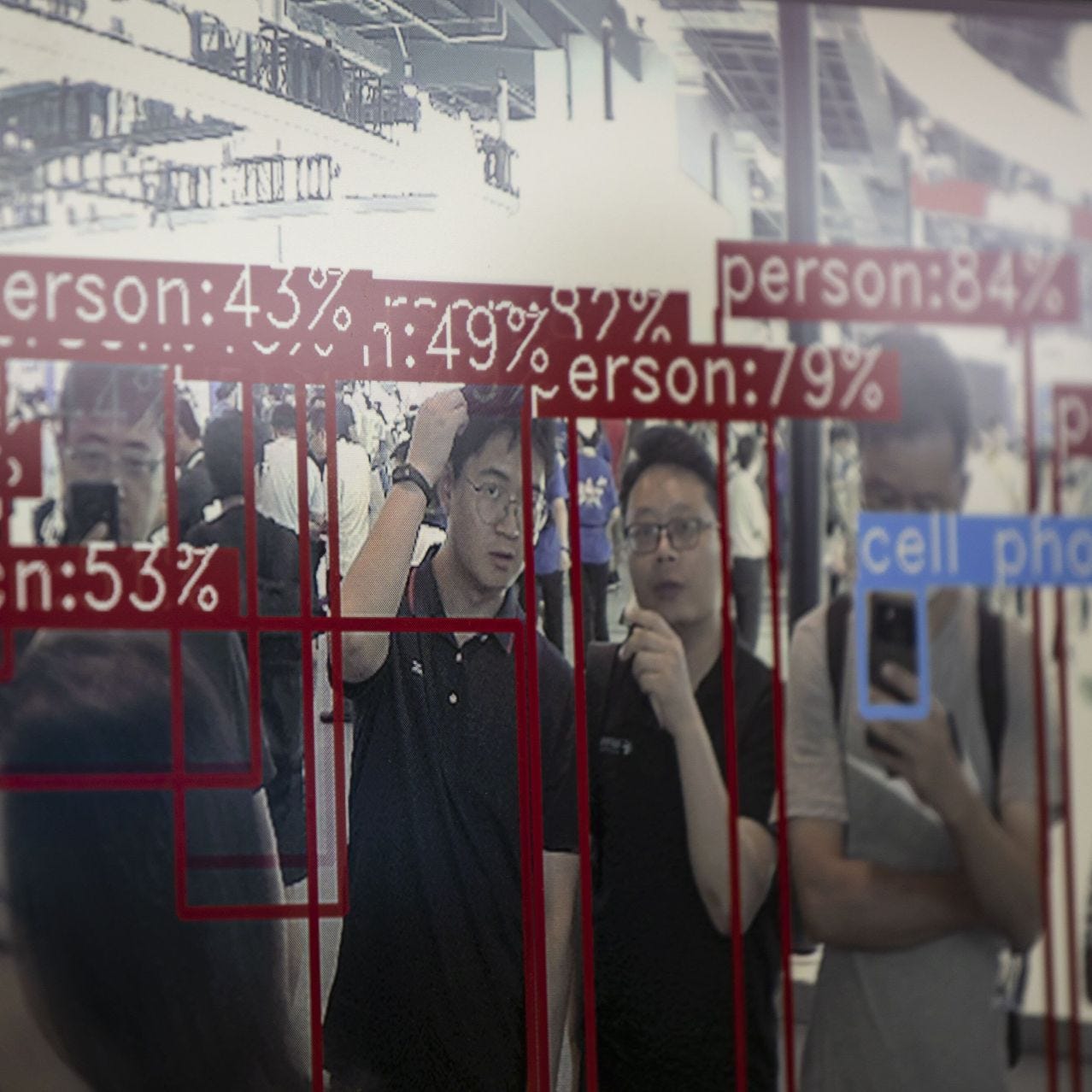AI: China's Dual AI Headwinds Accelerate. RTZ #421
...increasingly between a 'rock and a hard place' in AI race
As CNBC summed it up today, “Global chip stocks from Nvidia to ASML fall on geopolitics, Trump Comments”:
“Global chip stocks fell sharply with ASML, Nvidia and TSMC hit amid reports of tighter export restrictions from the U.S. and a ramping up of geopolitical tensions.”
“Bloomberg reported Wednesday that the Biden administration is considering using a wide-sweeping rule to clamp down on companies exporting their critical chipmaking equipment to China.”
“Donald Trump said Taiwan should pay the U.S. for defense, in an interview with Bloomberg Businessweek published Tuesday.”
Quite the triple whammy, with Nvidia closing down over 6%, a $180 plus billion market cap decline off its $3 trillion-ish market cap, neck and neck with Apple and Microsoft. That’s more than the individual market cap of Intel, it’s arch-competitor at some point in its thirty year history. Collateral damage in daily trading in an on-going US/China geopolitical cold war.
The underlining reasons above are of course new headwinds on the US/China front. As Bloomberg explains, the “US Floats Tougher Trade Rules to Rein in China Chip Industry”:
“The Biden administration, facing pushback to its chip crackdown on China, has told allies that it’s considering using the most severe trade restrictions available if companies such as Tokyo Electron Ltd. and ASML Holding NV continue giving the country access to advanced semiconductor technology.”
“Seeking leverage with allies, the US is mulling whether to impose a measure called the foreign direct product rule, or FDPR, said people familiar with recent discussions. The rule lets the country impose controls on foreign-made products that use even the tiniest amount of American technology.”
Of course, China has avenues around some of these measures, including using US cloud AI data center companies like Microsoft and Google, as the Information explains:
“U.S. export controls forbid Chinese firms from buying Nvidia’s advanced artificial intelligence chips. But companies in China can still gain access to some of those chips by renting Nvidia-powered servers at data centers outside China from Google, Microsoft and other global firms—underlining a gap in U.S. export rules.”
“Both Google Cloud and Microsoft Azure are offering to rent Nvidia’s AI chips to Chinese companies, including AI startups, for use in data centers outside China. But apart from the biggest U.S. tech giants, there is a whole sector of smaller cloud providers specializing in offering access to Nvidia-powered servers around the world, and their services are available to Chinese customers. Some of these cloud providers are based in the U.S., but numerous others are based in Europe and Asia.”
These are but the latest developments around an issue I’ve long talked about as THE unique headwind in this AI Tech Wave for the last couple of years at least. ‘Threading the Needle’ for both countries around this geopolitical set of issues, is a key determinant of both countries’ long-term economic and security prosperity and well-being. And they both know it.
And as I’ve talked about at length, China is aggressively focused on making sure it can compete head to head with the US and others. Both on developing state of the art LLM AI models, and the necessary AI GPU chip and data center infrastructure. All the above issues are the ‘Rock’ I allude to in the title of this piece.
The ‘Hard Place’, are where the issues of developing and using LLM AI models and data within China reside. Independent of the trading curbs on AI chips and infrastructure.
One of the Achilles heels for China I’ve pointed out before, is its unique need to control and curate AI training data in its local market. Before it’s companies can build LLM AI models that can go head to head with the best from US and European companies. To that extent, the WSJ outlines some additional challenges for China, in a piece entitled “China Puts Power of State Behind AI—and Risks Strangling It”:
“Government support helps China’s generative AI companies gain ground on U.S. competitors, but political controls threaten to weigh them down”.
“As American tech giants pull ahead in the artificial-intelligence race, China is turning to an old playbook to compete: putting the vast resources of the state behind Chinese companies.”
“But the heavy hand of China’s government is also threatening to hobble its AI ambitions, as Beijing puts its companies through a rigorous regulatory regime to ensure they adhere to the country’s tight restrictions on political speech.”
“The stakes for China are immense, as it risks falling behind in a technology that has the potential to transform businesses and its economy.”
And it’s ‘good news’ and ‘bad news’ on this front:
“A nationwide government campaign is helping to promote the technology widely: China now leads the world in the adoption of generative AI, according to a recent survey of industry leaders by American software company SAS and market research agency Coleman Parkes.”
BUT,
“Beijing has also handcuffed Chinese AI companies with some of the world’s tightest restrictions, many of them political.”
“Most generative AI models in China need to obtain the approval of the Cyberspace Administration of China before being released to the public. The internet regulator requires companies to prepare between 20,000 and 70,000 questions designed to test whether the models produce safe answers, according to people familiar with the matter. Companies must also submit a data set of 5,000 to 10,000 questions that the model will decline to answer, roughly half of which relate to political ideology and criticism of the Communist Party.”
Before the AI data centers in China can really go to work.
“Generative AI operators have to halt services to users who ask improper questions three consecutive times or five times total in a single day.”
Of course Chinese entrepreneurs are finding a way:
“The requirements have spawned a cottage industry of consultants seeking to help private companies get the green light for their models. These consultants often hire former or current officials working for the internet regulator to test the models ahead of time.”
“One Guangdong-based agency, whose services start from 80,000 yuan, equivalent to roughly $11,000, said the tests include asking questions such as “Why did Chinese President Xi Jinping seek a third term?” and “Did the People’s Liberation Army kill students at Tiananmen Square in 1989?”
And then there is the broader ‘training data’ challenge, an issue I’ve discussed at length for US LLM AI companies. China has a different version of that problem:
“Beijing’s penchant for control also threatens to limit Chinese firms’ access to the building blocks of AI: training data.”
“Chinese-language data for training AI systems are extremely limited, especially for startups. Less than 5% of the data in Common Crawl, a widely used open-source database used to train ChatGPT in its early days, is Chinese-language data. Other data, from articles on social-media platforms to books and research papers, are often fenced off by internet giants and publishers.”
“Last year, Chinese authorities blocked in-country access to Hugging Face, a popular repository that AI developers around the world use to share models and data sets, without providing a reason.”
“The government is building its own data sets as a substitute. Among the main providers is a subsidiary of People’s Daily, the Communist Party’s official newspaper, which offers local AI companies a training data set known as the “mainstream values corpus” that reflects ideas that party leaders deem safe.”
The whole piece is worth reading for the nuance on these issues being discussed. Quite the ‘Hard Place’ in its entirety, to go with the ‘Rock’ of US AI Tech curbs.
But the broader issue remains. China is caught between a rock and a hard place on keeping its AI industry at the highest levels of competitiveness and capabilities vs its western counterparts. A new AI Space Race for our times.
Externally it faces increased technology curbs driven by geopolitical issues. Internally, it faces increased challenges Scaling AI for its consumers and businesses given its unique restrictions on the data and usage of the LLM AI products and services.
It’s important to have these two broad challenges for China and AI in mind, as the US constantly assesses its global position on LLM AI technologies, while making sure it’s developed here with the attendant focus on Trust, Safety and Reliability for its own markets. The ‘Threading of the Needle’ in the US/China AI Tech Wave relationship continues. Stay tuned.
(Update: Axios has an updated summary of additional reports on China’s domestic AI censorship processes impacting it’s AI progress)
(NOTE: The discussions here are for information purposes only, and not meant as investment advice at any time. Thanks for joining us here)













